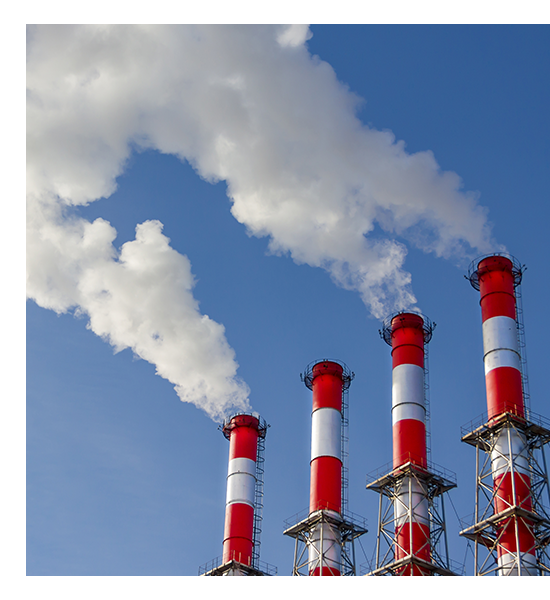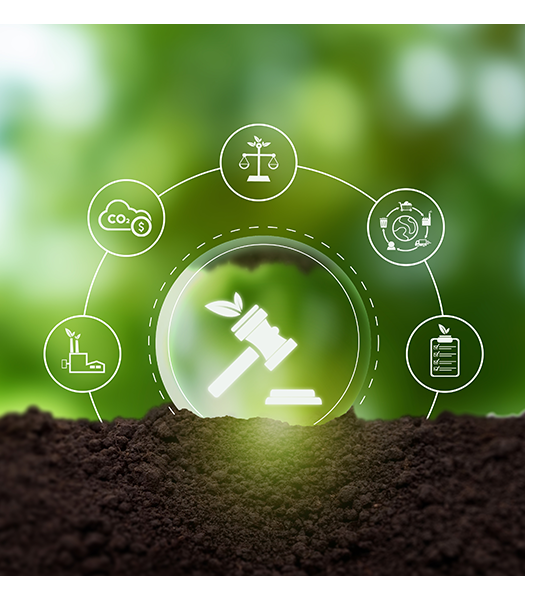
Is your business CBAM-ready?
The Carbon Border Adjustment Mechanism (CBAM) is a pivotal instrument in combating climate change and achieving net-zero objectives. By imposing carbon tariffs on imports into European Union, CBAM strives to ensure that products entering the European market adhere to the same stringent environmental standards as products produced within the EU, with the same low carbon production, or else the importers must pay the difference.
Implemented by the European Commission, the CBAM is designed to align with the push towards a greener global economy, fostering international cooperation in the pursuit of climate goals. As a financial mechanism, CBAM penalizes carbon-intensive imports while generating funds that can be channeled into renewable initiatives, fortifying the role of the European Union (EU) in climate change mitigation.
Beyond the environmental aspect, this initiative has a broader dimension: “While trade tensions are on the rise globally, CBAM emerges as Europe's strategic response to potential trade barriers,” explains Camila Torres, Carbon Expert at Bureau Veritas Group. “Pricing in the cost of carbon emissions in the value of imported goods creates a level playing field for EU and non-EU producers of the same materials. It serves as a diplomatic and progressive approach amid shifting global trade dynamics.”
Ambitious objectives and deployment
Initially adopted by the European Commission in July 2021[1] as Regulation 2023/956, the CBAM Regulation was signed by EU legislators in May 2023. On August 2023, the Commission adopted Implementing Regulation 2023/1773, which details reporting obligations under CBAM during the transitional period, the full regulation coming into force on January 1, 2026. As of January 2024, CBAM has been implemented for the importation of specific goods characterized by carbon-intensive production and facing the highest risk of carbon leakage: cement, iron, steel, aluminum, fertilizers, electricity, and hydrogen. A vital selection, considering that carbon intensity varies greatly from country to country: steel production in China costs two tons of CO2 per ton of steel, against 1,3 t in the EU, for instance[2]. Similarly, at almost 17t CO2/t of aluminium, production in India is almost three times more carbon-intensive than in Europe[3]. CBAM is projected to encompass over 50% of GHG emissions in sectors covered by the Emissions Trading System (ETS)[4].
CBAM’s ambitious objectives are twofold. First, it aims to incentivize Europe’s global partners to adopt greener practices. Second, its objective is to deter 'carbon leakage' – the migration of carbon-intensive industries to regions with lax environmental regulations, which poses a significant threat to the effectiveness of climate policies[5] – by imposing a carbon levy on the import of specific product categories from third countries (non-EU and non-European Free Trade Association, EFTA), correlated with the carbon price applicable in the EU Emissions Trading System (EU ETS) for equivalent goods manufactured within the EU. By holding imported goods accountable for their carbon content, the EU hopes to implement fairer conditions for EU businesses committed to sustainable practices.
Once the permanent system is implemented, importers will be required to declare annually the volume of goods imported into the EU in the previous year, along with their embedded greenhouse gas (GHG) emissions. Importers must then surrender an equivalent number of CBAM certificates. The pricing of these certificates will be determined based on the weekly average auction price of EU ETS allowances, denominated in €/t of CO2 emitted.
The transition from the free allocation under the EU ETS to the integration of CBAM will occur during the 2026-2034 period. Any changes in the existing allocation regulatory framework need to be introduced with caution. Indeed, the sectors affected by CBAM are highly diverse: cars, electronics, construction products, agricultural products, etc. – with the potential addition of petroleum products, industrial gases, synthetic rubber products, and more by 2030. These activities encompass various production methods, embedded emissions, and trade connections, making CBAM deployment highly complex, with risks of circumvention, resource manipulation, and levy absorption.
Scope, requirements, and penalties
“The main responsibilities for enforcing CBAM undoubtedly fall on importers,” explains Mark Fraser, Sustainability Business Development Manager. “From reporting to data collection, verification, and compliance, they play a pivotal role in CBAM.” Importers are tasked with detailed submissions, including the declarant’s identity, address, and role, plus the identification and details of importers and representatives.
 CBAM also mandates the comprehensive documentation of each imported item, including commodity codes, country of origin, and explicit descriptions. The report demands data on the quantity of goods under various customs procedures, incorporating inward processing specifics. Notably, it covers the total emissions (direct and indirect) associated with the goods, indicating the measurement units used.
CBAM also mandates the comprehensive documentation of each imported item, including commodity codes, country of origin, and explicit descriptions. The report demands data on the quantity of goods under various customs procedures, incorporating inward processing specifics. Notably, it covers the total emissions (direct and indirect) associated with the goods, indicating the measurement units used.
Additionally, the report requires details of the production method and parameters for emissions, ensuring transparency in environmental impact. Supporting documents are essential, providing in-depth emission sequence data, installation details, and the calculated carbon price due. This report forms a complete framework for environmental accountability, linking imported goods to their carbon footprint.
To ensure the full application of the mechanism, penalties have been implemented. During the transition period, these are adjusted according to the unreported information, quantities of imported goods, and related emissions. The assessment considers not only the declarant's past behavior, but also their willingness to rectify the situation. Once the transition period ends, further penalties will be implemented, concerning issues such as failure to surrender CBAM certificates, excess emissions, and practices circumventing CBAM, among others[6].
Preparing businesses for CBAM implementation
The transition period, lasting till December 31, 2025, is crucial. It is designed to act as a pilot phase, facilitating learning for all stakeholders (importers, producers, and authorities) and gathering valuable information to enhance the methodology once the regulation comes into force. Additionally, the Commission has created specialized IT tools to assist importers in conducting and documenting these calculations. Comprehensive guidance, training resources, and tutorials have also been developed to aid businesses as they navigate the transition period.
However, businesses would do well to adopt a proactive attitude and anticipate the European Commission’s requirements. “The EU will start gently on CBAM, but will gradually tighten its requirements,” warns Paweł Klawiter-Piwowarski, Business Unit Sustainability Manager at Bureau Veritas Poland. “It would be optimal for companies to start ‘practicing,’ so to speak, so as to be ready when the regulation is fully in place: assess their declaration processes, check their verification mechanisms – in a nutshell, act as if CBAM were already fully set up.”
Identifying the affected goods, calculating the embedded emissions, working on reducing carbon footprints: numerous avenues are already accessible for businesses to proactively address the impending regulations and their stipulations. CBAM presents a fresh opportunity for advancing net-zero objectives, and organizations should promptly seize this chance.
Bureau Veritas: Helping companies on their way to full CBAM deployment
Bureau Veritas has embraced the mission of supporting companies in their sustainability journey. To this end, our carbon experts are dedicated to assisting businesses in readiness for CBAM deployment. From measuring carbon footprints and embedded emissions to offering certification and verification for reporting, our comprehensive services and expertise empower organizations to help them navigate this new regulation, helping you ensure compliance by the time CBAM is fully implemented in 2026.
FURTHER READING
Reference
[1] https://eur-lex.europa.eu/resource.html?uri=cellar:a95a4441-e558-11eb-a1a5-01aa75ed71a1.0001.02/DOC_1&format=PDF
[2] https://static1.squarespace.com/static/5877e86f9de4bb8bce72105c/t/624ebc5e1f5e2f3078c53a07/1649327229553/Steel+climate+impact-benchmarking+report+7April2022.pdf
[3] https://static1.squarespace.com/static/5877e86f9de4bb8bce72105c/t/624d11ab5a37a4341fd85a6e/1649217981897/Aluminum+benchmarking+report-+Feb2022+rev2.pdf
[4] https://taxation-customs.ec.europa.eu/carbon-border-adjustment-mechanism_en
[5] https://climate.ec.europa.eu/eu-action/eu-emissions-trading-system-eu-ets/free-allocation/carbon-leakage_en
[6] https://www.gleisslutz.com/en/news-events/know-how/cbam-new-obligations-and-penalties-under-eus-carbon-border-adjustment-mechanism-take-effect-1-october-2023
Sources:
• https://taxation-customs.ec.europa.eu/carbon-border-adjustment-mechanism_en
• https://eaccny.com/news/member-news/osrich-understanding-cbam-duties-implications-for-eu-importers/
• https://www.gleisslutz.com/en/news-events/know-how/cbam-new-obligations-and-penalties-under-eus-carbon-border-adjustment-mechanism-take-effect-1-october-2023
• https://taxation-customs.ec.europa.eu/system/
files/2023-12/Guidance%20document%20on%20CBAM%20implementation%20for%20importers%20of%20goods%20into%20the%20EU.pdf
• https://www.eurofer.eu/assets/Uploads/20210927-EUROFER-comments-CBAM.pdf
• https://www.acea.auto/news/more-than-just-acronyms-cbam-and-ets-what-do-they-mean-for-decarbonising-the-transport-sector/

